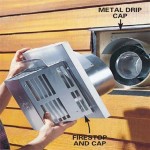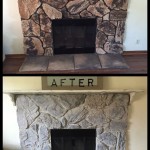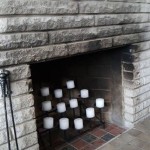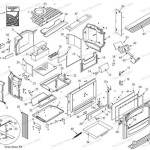TV Built In Above Fireplace: Considerations and Best Practices
The integration of a television above a fireplace has become a prevalent design choice in modern residential settings. This configuration aims to maximize space utilization and create a focal point in a living area. However, the placement of a TV above a fireplace presents several unique challenges that must be carefully addressed to ensure the longevity of the television, the comfort of viewers, and adherence to safety standards.
This article will explore the key considerations surrounding the installation of a television above a fireplace, including heat management, viewing angles, cable management, structural integrity, and power access. By understanding these factors, homeowners and designers can make informed decisions to create a functional and aesthetically pleasing media setup.
Heat Management and Television Longevity
The primary concern when mounting a television above a fireplace is the heat generated by the fireplace. Excessive heat can significantly reduce the lifespan of electronic components within the television. Modern televisions are designed to operate within specific temperature ranges, and exceeding these limits can lead to performance degradation, screen discoloration, or even permanent damage.
The upward flow of hot air from a fireplace directly impacts the area above it. The degree of heat exposure depends on several factors, including the type of fireplace (wood-burning, gas, or electric), the frequency of use, and the insulation of the surrounding structure. Wood-burning fireplaces, in particular, tend to produce higher temperatures and more soot, posing a greater risk to the television.
To mitigate heat-related risks, several strategies can be implemented. Installing a mantel is a common practice, as it acts as a barrier, deflecting heat away from the television. The depth of the mantel should be sufficient to effectively shield the television from rising heat. A general rule of thumb is that a mantel should extend at least six inches beyond the fireplace opening.
Another approach involves installing a heat shield above the fireplace opening. These shields are typically made of metal and are designed to redirect heat away from the television. Heat shields can be custom-made to fit the specific dimensions of the fireplace and the television. Furthermore, proper ventilation can help dissipate heat. Ensuring adequate airflow around the television, particularly behind it, can help prevent heat buildup. This may involve leaving sufficient space between the television and the wall or installing fans to circulate air.
Regularly monitoring the temperature above the fireplace is crucial. A simple thermometer placed in the intended television location during fireplace use can provide valuable data. If the temperature consistently exceeds the television manufacturer's recommended operating range, further mitigation measures should be considered. Moreover, adhering to the fireplace manufacturer's guidelines regarding burn times and fuel types helps to control the amount of heat generated.
Optimizing Viewing Angles and Ergonomics
The height at which a television is mounted significantly affects the viewing experience. Placing a television too high can lead to neck strain and discomfort, especially during extended viewing sessions. When a television is mounted above a fireplace, it is often positioned higher than the ideal viewing height. The ideal viewing height is typically considered to be when the center of the screen is at eye level while seated.
To address this issue, several factors must be considered. The height of the seating area is a primary determinant. Lower seating, such as couches or floor cushions, requires a lower television mounting height. Conversely, higher seating, such as bar stools or dining chairs, can accommodate a higher television placement. The size of the television screen also plays a role. Larger screens require a greater viewing distance, which can slightly alleviate the impact of a high mounting position.
Tilting the television downward is a common solution to improve viewing angles. A tilting mount allows the viewer to adjust the angle of the screen to compensate for the elevated position. The degree of tilt required depends on the mounting height and the viewing distance. Some mounts offer a wide range of tilt angles, providing greater flexibility in adjusting the viewing experience.
It is important to consider the long-term effects of viewing a television at an elevated angle. Prolonged neck strain can lead to chronic pain and discomfort. Regular stretching and posture adjustments can help mitigate these effects. Additionally, taking breaks during extended viewing sessions can reduce fatigue and prevent muscle stiffness. Consulting with an ergonomic specialist can provide personalized recommendations for optimizing viewing angles and minimizing discomfort.
Beyond tilt, it is also helpful to consider a full-motion mount. These mounts allow for both tilt and swivel, giving the viewer the ability to adjust the TV not just up and down, but also left and right. This can be useful in rooms with multiple viewing areas or if the fireplace is not centered on the wall.
Cable Management, Structural Integrity, and Power Access
Effective cable management is essential for maintaining a clean and organized appearance when installing a television above a fireplace. Exposed cables can detract from the aesthetics of the room and pose potential safety hazards. Furthermore, proper cable management can prevent damage to the cables themselves, ensuring optimal performance and longevity.
Running cables through the wall is a common method of concealing them. This involves creating openings in the wall to route cables from the television to the desired location, such as a cable box or a power outlet. It is crucial to ensure that the wall openings are properly sealed and that the cables are protected from damage. Using cable sleeves or conduits can help prevent abrasion and ensure compliance with building codes.
Another approach involves using cable raceways or channels. These are surface-mounted conduits that conceal cables along the wall. Cable raceways are available in various sizes and finishes, allowing them to blend seamlessly with the surrounding decor. They are easy to install and provide a convenient way to organize and conceal cables without the need for in-wall wiring.
Structural integrity is a critical consideration when mounting a television above a fireplace. The wall must be capable of supporting the weight of the television and the mounting hardware. The wall construction, whether it is drywall, brick, or concrete, determines the type of mounting hardware required. Using appropriate anchors and fasteners is essential for ensuring a secure and stable installation.
Identifying wall studs is crucial for providing a strong and reliable mounting point. Wall studs are vertical framing members that provide structural support for the wall. Using a stud finder can help locate the studs behind the drywall. Mounting the television to the studs ensures that the weight is distributed evenly and that the mounting hardware does not pull out of the wall.
Power access is another important factor to consider. A power outlet must be located near the television to provide electricity. If an outlet is not already present, it may be necessary to install a new one. This should be done by a qualified electrician to ensure compliance with electrical codes and safety standards. Running power cords across the floor can create a tripping hazard, so it is essential to ensure that the power cord is safely concealed or routed.
Concealing power outlets and cables can be achieved through the use of recessed outlets and in-wall power kits. These kits allow for the seamless integration of power outlets and cables into the wall, creating a clean and professional appearance. Recessed outlets are designed to be flush with the wall surface, minimizing their visibility. In-wall power kits typically include a power inlet and a power outlet, allowing for the extension of power without the need for exposed cords.

Can I Mount My Tv Above The Fireplace

Tv Above Fireplace Design Ideas

Putting A Tv Above Your Mantel Summer Adams

How To Hang A Tv Over Fireplace

Placing A Tv Over Your Fireplace Do Or Don T Betterdecorating Home Living Room New York Designs

Matching Your Tv Size To Fireplace

Fireplaces Tvs 4 Things You Re Doing Wrong Stylish

Safely Mount A Tv Above An Electric Fireplace Touchstone Home S Inc

Mounting A Tv Above The Fireplace Mantelmount

Never Mount Your Tv Above A Fireplace Here S Why Slashgear








